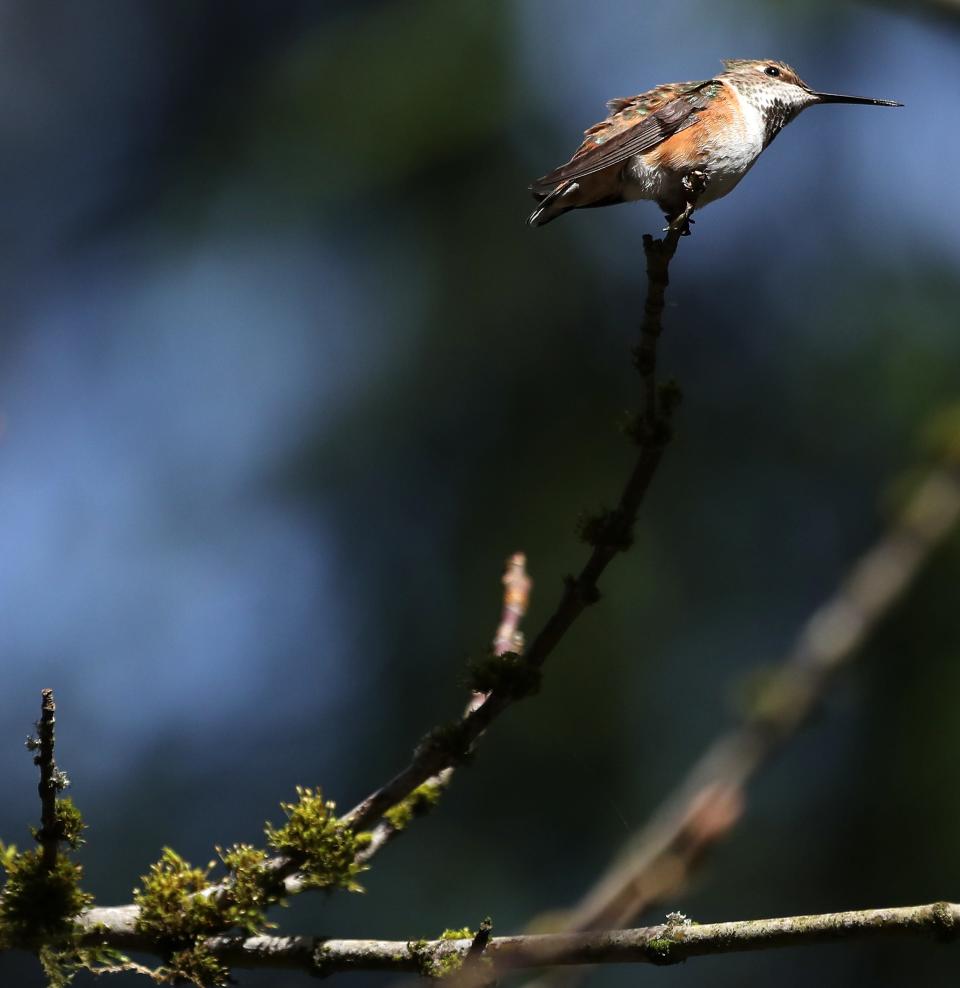Pretty natives that please pollinators in the Pacific Northwest
What looks great in your garden right now? Besides daffodils and tulips, many exotic (aka non-native) ornamentals are not yet strutting their stuff. Indeed, after spring bulbs have faded, many gardens are quiet until late May or June. There’s lots of information about benefits to growing native plants, including pollinator pleasing, though early bloom isn’t often cited. However, the PNW boasts a lovely assortment of early bloomers that can brighten the garden from March until those later border beauties kick in. In fact, a well chosen native pollinator border will have something in bloom from February or March clear into November, and sporadically all winter.

Consider Oregon Grape, an evergreen shrub clan with species that reach between 18 inches to over ten feet. Sprays of golden, honey-scented blossoms will lure in bees and other pollinators on any sunny day. The tallest types start the show in autumn and carry on through winter while more compact species pick up the baton and bloom from March into June. The tallest types can get leggy if grown in shade, but do well with around 6 hours of direct sun a day. To renovate stragglers, feel the stems and cut just above a raised bump that indicates a dormant bud.
Flowering currants are bumblebee and hummingbird magnets, their dangling bloom clusters opening in sequence from March through May in shades of red, pink, rose, or white. Starry white serviceberry trees flower from March through April, with plump little fruit following to bring in the birds. Ivory-belled Indian plum also blooms from late February through April, as do vine maples. Really? Yes! A friend recently said he thought his vine maple had somehow cross-pollinated with a hardy fuchsia. Though they are not related, that’s an understandable mistake, as with their red skirts above fluffy white petticoats and long golden stamens, they do superficially resemble little fuchsia blossoms.
Vine maples make excellent small trees for small yards, growing bushy and upright in sun and lanky and sprawling in shade. Handsome variants include Pacific Fire, with brilliant red stems that glow in winter; Monroe, with finely cut leaves; and Sunglow, with peach sherbet tinted spring foliage that turns lime yellow in summer (this one needs afternoon shade to keep leaves from scorching).
California lilac (Ceanothus) has many decorative selections, often with textured, evergreen foliage and puffs of fluffy flowers in shades of bright or light blue, purple, lavender, or white. This sturdy shrub ranges from ground-covering Yankee Point to the tree-like C. arboreus, which can reach from 12-35 feet. These showboat shrubs attract butterflies as well as all sorts of bees and are excellent performers in drier settings (though they need summer water for the first year or two).
With their glossy leaves and tasty, abundant berries, evergreen huckleberries earn a spot in any garden. For more pop, plant Cascade Sunburst, a compact, densely furnished huck with rosy pink new growth and cream-splashed mature foliage, or Scarlet Ovation, with vivid red new growth as bright as any blossom.
Our region is also rich in annuals and perennials, from charming little Baby Blue Eyes, vivid red and gold Western columbine, creamy yarrow and fluffy purple globes of Phacelia to the many colors of California poppy (orange, yellow, red, pink, cream, and even purple!) Native bulbs include showy camas and dainty nodding onion, while perennial lupines, asters, and goldenrods decorate the garden from late summer into autumn. Besides bee pleasing, among the best gifts these natives offer is that of easy care, as they need little or nothing from us once established. What’s not to love?
Contact Ann Lovejoy at 413 Madrona Way NE, Bainbridge Island, WA 98110 or visit Ann’s blog at http://www.loghouseplants.com/blogs/greengardening/ and leave a question/comment.
This article originally appeared on Kitsap Sun: Pacific Northwest native plants that include early bloomers

